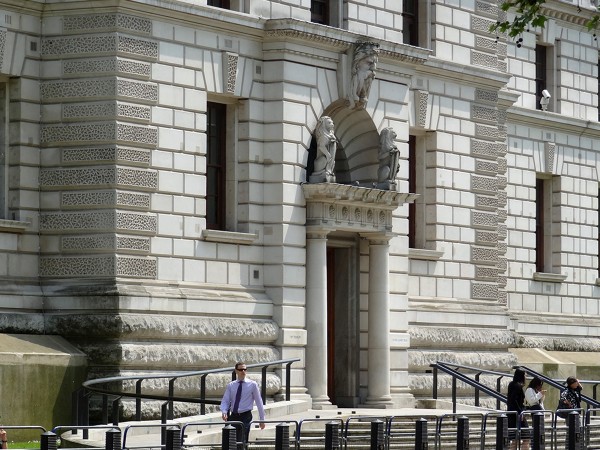 As the Chancellor of the Exchequer, Philip Hammond, delivers his first Autumn statement, both the Office for Budget Responsibility (OBR) and the National Institute for Economic and Social Research (NIESR) have published updated forecasts for government borrowing and government debt.
As the Chancellor of the Exchequer, Philip Hammond, delivers his first Autumn statement, both the Office for Budget Responsibility (OBR) and the National Institute for Economic and Social Research (NIESR) have published updated forecasts for government borrowing and government debt.
They show a rise in government borrowing compared with previous forecasts. The main reason for this is a likely slowdown in the rate of economic growth and hence in tax revenues, especially in 2017. Last March, the OBR forecast GDP growth of 2.2% for 2017; it has now revised this down to 1.4%.
This forecast slowdown is because of a likely decline in the growth of aggregate demand caused by a decline in investment as businesses become more cautious given the uncertainty about the UK’s relationships with the rest of the world post Brexit. There is also likely to be a slowdown in real consumer expenditure as inflation rises following the fall in the pound of around 15%.
But what might be more surprising is that the public finances are not forecast to deteriorate even further. The OBR forecasts that the deficit will increase by a total of £122bn to £216bn over the period from 2016/17 to 2020/21. The NIESR predicts that it will rise by only £50bn to £187bn – but this is before the additional infrastructure spending and other measures announced in the Autumn Statement.
 One reason is looser monetary policy. Following the Brexit vote, the Bank of England cut Bank Rate from 0.5% to 0.25% and introduced further quantitative easing. This makes it cheaper to finance government borrowing. What is more, the additional holdings of bonds by the Bank mean that the Bank returns to the government much of the interest (coupon payments) that would otherwise have been paid to the private sector.
One reason is looser monetary policy. Following the Brexit vote, the Bank of England cut Bank Rate from 0.5% to 0.25% and introduced further quantitative easing. This makes it cheaper to finance government borrowing. What is more, the additional holdings of bonds by the Bank mean that the Bank returns to the government much of the interest (coupon payments) that would otherwise have been paid to the private sector.
Then, depending on the nature of the UK’s post-Brexit relationships with the EU, there could be savings in contributions to the EU budget – but just how much, no-one knows at this stage.
Finally, it depends on just what effects the measures announced in the Autumn Statement will have on tax revenues and government spending. We will examine this in a separate blog.
But even though public-sector borrowing is likely to fall more slowly than before the Brexit vote, the trajectory is still downward. Indeed, the previous Chancellor, George Osborne, had set a target of achieving a public-sector surplus by 2019/20.
But, would eventually bringing the public finances into surplus be desirable? Apart from the dampening effect on aggregate demand, such a policy could lead to underinvestment in infrastructure and other public-sector capital. There is thus a strong argument for continuing to run a deficit on the public-sector capital account to fund public-sector investment – such investment will increase incomes and social wellbeing in the future. It makes sense for the government to borrow for investment, just as it makes sense for the private sector to do so.
Articles
Autumn Statement: Why the damage to the public finances from Brexit might not be as bad as some think Independent, Simon Kirby (22/11/16)
Three Facts about Debt and Deficits NIESR blogs, R Farmer (21/11/16)
Autumn Statement: Big increase in borrowing predicted BBC News, Anthony Reuben (23/11/16)
Data
Economic and fiscal outlook – November 2016 Office for Budget Responsibility (23/11/16)
Questions
- Why have the public finances deteriorated?
- How much have they deteriorated?
- What is likely to happen to economic growth over the next couple of years? Explain why.
- How has the cut in Bank Rate and additional quantitative easing introduced after the Brexit vote affected government borrowing?
- What is likely to happen to (a) public-sector borrowing; (b) public-sector debt as a proportion of GDP over the next few years?
- Why is a running a Budget surplus neither a necessary nor a sufficient condition for reducing the government debt to GDP ratio.
- What are the arguments for (a) having a positive public-sector debt; (b) increasing public-sector debt as a result of increased spending on infrastructure and other forms of public-sector capital?
 The Brexit vote has caused shockwaves throughout European economies. But there is a potentially larger economic and political problem facing the EU and the eurozone more specifically. And that is the state of the Italian banking system and the Italian economy.
The Brexit vote has caused shockwaves throughout European economies. But there is a potentially larger economic and political problem facing the EU and the eurozone more specifically. And that is the state of the Italian banking system and the Italian economy.
Italy is the third largest economy in the eurozone after Germany and France. Any serious economic weaknesses could have profound consequences for the rest of the eurozone and beyond.
At 135% of GDP, Italy’s public-sector debt is one the highest in the world; its banks are undercapitalised with a high proportion of bad debt; and it is still struggling to recover from the crisis of 2008–9. The Economist article elaborates:
The adult employment rate is lower than in any EU country bar Greece. The economy has been moribund for years, suffocated by over-regulation and feeble productivity. Amid stagnation and deflation, Italy’s banks are in deep trouble, burdened by some €360 billion of souring loans, the equivalent of a fifth of the country’s GDP. Collectively they have provisioned for only 45% of that amount. At best, Italy’s weak banks will throttle the country’s growth; at worst, some will go bust.
Since 2007, the economy has shrunk by 10%. And potential output has fallen too, as firms have closed. Unemployment is over 11%, with youth unemployment around 40%.
Things seem to be coming to a head. As confidence in the Italian banking system plummets, the Italian government would like to bail out the banks to try to restore confidence and encourage deposits and lending. But under new eurozone rules designed to protect taxpayers, it requires that the first line of support should be from bondholders. Such support is known as a ‘bail-in’.
 If bondholders were large institutional investors, this might not be such a problem, but a significant proportion of bank bonds in Italy are held by small investors, encouraged to do so by tax relief. Bailing in the banks by requiring bondholders to bear significant losses in the value of their bonds could undermine the savings of many Italians and cause them severe hardship, especially those who had saved for their retirement.
If bondholders were large institutional investors, this might not be such a problem, but a significant proportion of bank bonds in Italy are held by small investors, encouraged to do so by tax relief. Bailing in the banks by requiring bondholders to bear significant losses in the value of their bonds could undermine the savings of many Italians and cause them severe hardship, especially those who had saved for their retirement.
So what is the solution? Italian banks need recapitalising to restore confidence and prevent a more serious crisis. However, there is limited scope for bailing in, unless small investors can be protected. And eurozone rules provide little scope for government funding for the banks. These rules should be relaxed under extreme circumstances. At the same time, policy needs to focus on making Italian banking more efficient.
Meanwhile, the IMF is forecasting that Italian economic growth will be less than 1% this year and little better in 2017. Part of the problem, claims the IMF, is the Brexit vote. This has heightened financial market volatility and increasead the risks for Italy with its fragile banking system. But the problems of the Italian economy run deeper and will require various supply-side policies to tackle low productivity, corruption, public-sector inefficiency and a financial system not fit for purpose. What the mix of these policies should be – whether market based or interventionist – is not just a question of effectiveness, but of political viability and democratic support.
Articles
The Italian Job The Economist (9/7/16)
IMF warns Italy of two-decade-long recessionThe Guardian, Larry Elliott (11/7/16)
Italy economy: IMF says country has ‘two lost decades’ of growth BBC News (12/7/16)
What’s the problem with Italian banks? BBC News, Andrew Walker (10/7/16)
Why Italy’s banking crisis will shake the eurozone to its core The Telegraph, Tim Wallace Szu Ping Chan (16/8/16)
If You Thought Brexit Was Bad Wait Until The Italian Banks All Go Bust Forbes, Tim Worstall (17/7/16)
In the euro zone’s latest crisis, Italy is torn between saving the banks or saving its people Quartz, Cassie Werber (13/7/16)
Why Italy could be the next European country to face an economic crisis Vox, Timothy B. Lee (8/7/16)
Forget Brexit, Quitaly is Europe’s next worry The Guardian, Larry Elliott (26/7/16)
Report
Italy IMF Country Report No. 16/222 (July 2016)
Data
Economic Outlook OECD (June 2016) (select ‘By country’ from the left-hand panel and then choose ‘Italy’ from the pull-down menu and choose appropriate time series)
Questions
- Can changes in aggregate demand have supply-side consequences? Explain.
- Explain why there may be a downward spiral of asset sales by banks.
- How might the principle of bail-ins for undercapitalised Italian banks be pursued without being at the expense of the small saver?
- What lessons are there from Japan’s ‘three arrows’ for Italy? Does being in the eurozone constrain Italy’s ability to adopt any or all of these three categories of policy?
- Why may the Brexit vote have more serious consequences for Italy than many other European economies?
- Find out what reforms have already been adopted or are being pursued by the Italian government. How successful are they likely to be in increasing Italian growth and productivity?
- What external factors are currently (a) favourable, (b) unfavourable to improving Italian growth and productivity?
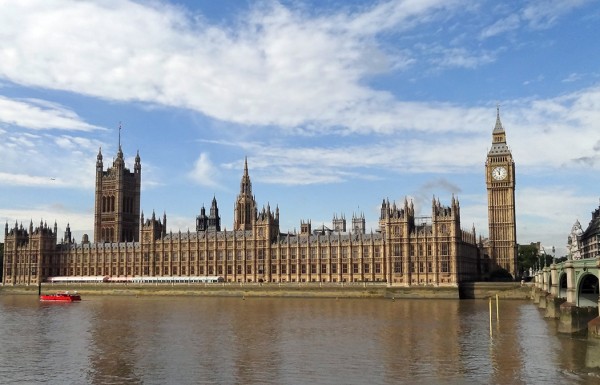 On election to office in May 2015, the UK’s Conservative government set new fiscal targets. These were set out in an updated Charter for Budget Responsibility. As Box 12.3 in Essentials of Economics (7th edition) states:
On election to office in May 2015, the UK’s Conservative government set new fiscal targets. These were set out in an updated Charter for Budget Responsibility. As Box 12.3 in Essentials of Economics (7th edition) states:
The new fiscal mandate set a target for achieving a surplus on public-sector net borrowing by the end of 2019/20. More controversially, government should then target a surplus in each subsequent year unless real GDP growth falls below 1 per cent … Meanwhile, the revised supplementary target for public-sector debt was for the net debt-to-GDP ratio to fall each year from 2015/16 to 2019/20.
What is more, the Charter requires the government to set a cap on welfare spending over a five-year period. 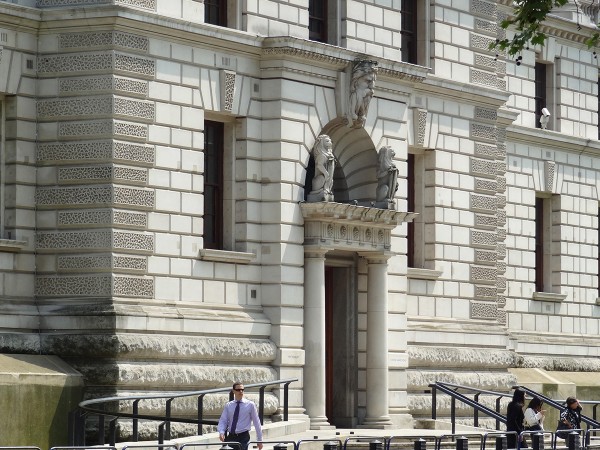 Such spending includes spending on pensions, tax credits, child benefit and unemployment benefit. In July 2015 the Chancellor set this cap at £115bn for 2016/17, a reduction of £12bn.
Such spending includes spending on pensions, tax credits, child benefit and unemployment benefit. In July 2015 the Chancellor set this cap at £115bn for 2016/17, a reduction of £12bn.
Whether or not such a tight fiscal target is desirable, the government has been missing the target. In November last year, the Chancellor had to backtrack on his plans to make substantial reductions in tax credits and as a result the welfare cap has been breached, as the following table from page 5 of the December 2015 House of Commons briefing paper shows.

Also, with the slowing of economic growth, the Chancellor has stated that he will miss the requirement for a fall in the net debt-to-GDP ratio unless further cuts in government spending are made, equivalent to 50p in every £100.
But, if the economy is slowing, is it right to cut government expenditure? In other words, should there be some discretion in fiscal policy to respond to economic circumstances? There are two issues here. The first is whether the resulting cut in aggregate demand will be detrimental to growth. The second is who will bear the cost of such cuts. Critics of the government claim that it will largely the poor who will lose if the cuts are made mainly from benefits.
The articles below examine the public finances, the difficulties George Osborne has been facing in sticking to his fiscal mandate and the options open to him.
Articles
Budget 2016: Osborne’s economic fitness regime BBC News, Andy Verity (14/3/16)
Budget 2016: George Osborne fuels speculation of nasty shocks The Guardian, Larry Elliott and Anushka Asthana (14/3/16)
Official publications
Charter for Budget Responsibility: Summer Budget 2015 update HM Treasury (July 2015)
OBR publications, including ‘Economic and fiscal outlook’ and ‘Fiscal sustainability report’ Office for Budget Responsibility
Questions
- Outline the main points of the Charter for Budget Responsibility (CBR).
- What are the arguments for sticking to fiscal rules, such as those in the CBR?
- What are the arguments for using discretion to adjust fiscal policy as economic circumstances change?
- Compare the Conservative government’s fiscal mandate with the newly announced approach to fiscal policy of the Labour opposition?
- How does the Labour Party’s new approach differ from the Golden Rule followed by Gordon Brown as Chancellor in the Labour government from 1997 to 2007?
- What factors will determine whether or not the government will return to meeting the rules set out in the Charter for Budget Responsibility?
 In their manifestos, the parties standing for the UK general election on May 7th state their plans for fiscal policy and, more specifically, for reducing public-sector net borrowing and public-sector net debt. The degree of detail in the plans varies, especially with regards to where cuts will be made, but there are nevertheless some very clear differences between the parties.
In their manifestos, the parties standing for the UK general election on May 7th state their plans for fiscal policy and, more specifically, for reducing public-sector net borrowing and public-sector net debt. The degree of detail in the plans varies, especially with regards to where cuts will be made, but there are nevertheless some very clear differences between the parties.
The Institute for Fiscal Studies has examined the public finance plans of the Conservatives, Labour, Liberal Democrats and SNP and has published a briefing note (see link below) and an accompanying press release. It accuses all four parties’ plans of being short on detail over specific cuts (especially the Conservatives), and over borrowing requirements (especially Labour):
None of these parties has provided anything like full details of their fiscal plans for each year of the coming parliament, leaving the electorate somewhat in the dark as to both the scale and composition of likely spending cuts and tax increases. In our analysis we have used the information provided in each manifesto, plus in some cases some necessary assumptions, to shed light on the four parties’ plans.
But despite the lack of detail, the IFS claims that there are big differences in the parties’ plans. These are illustrated in the following three charts from the IFS Briefing Note.
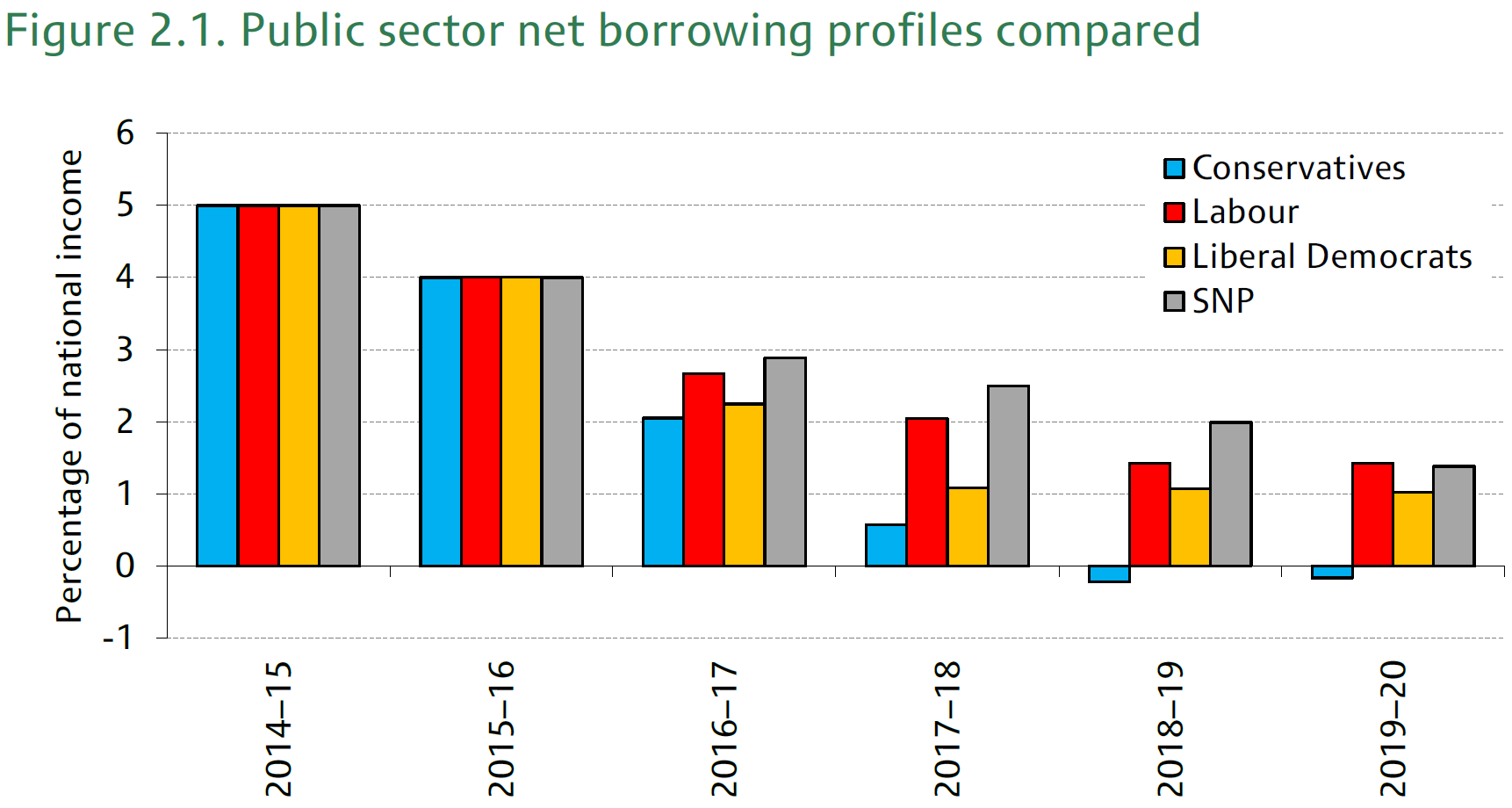
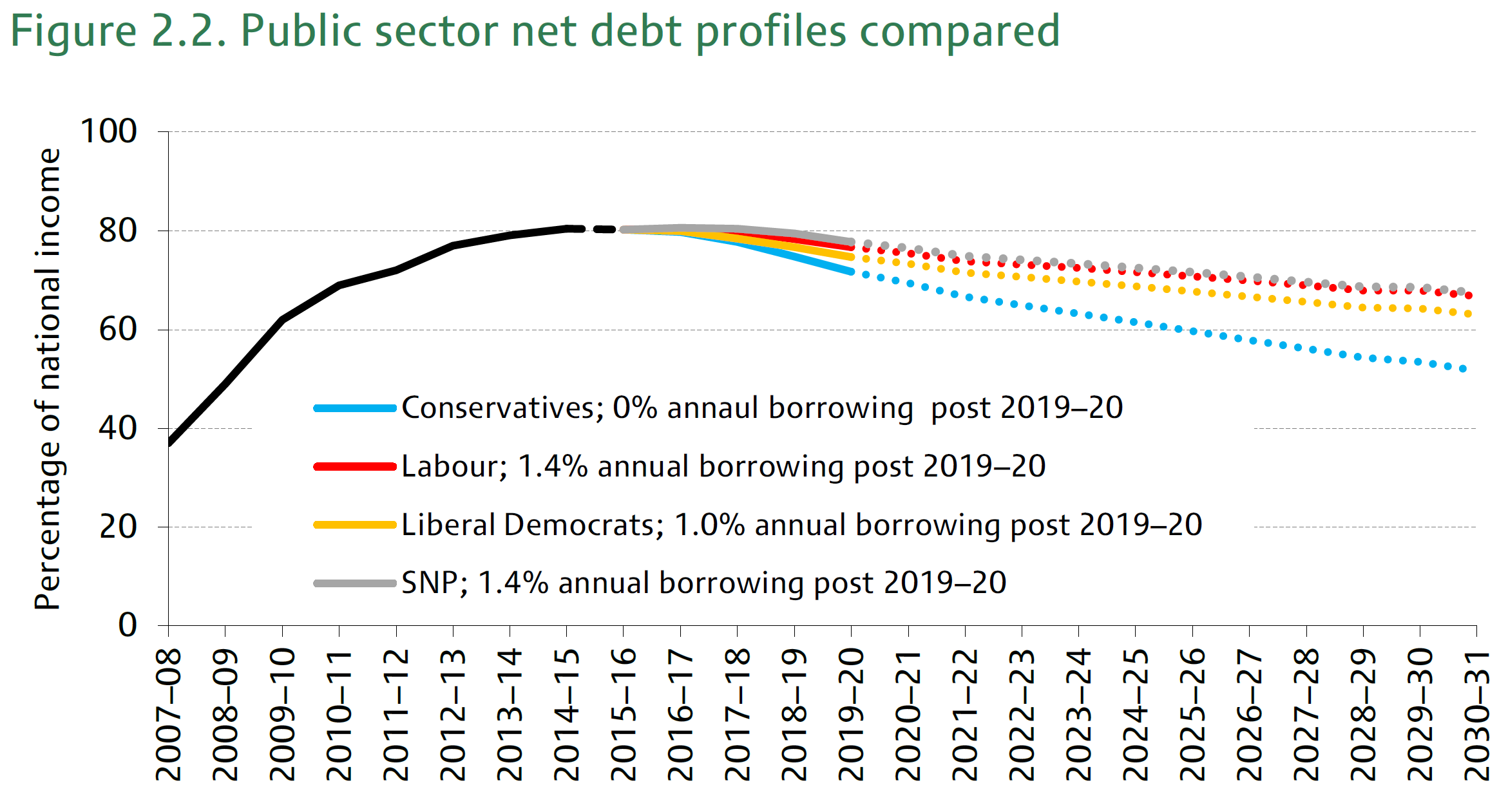
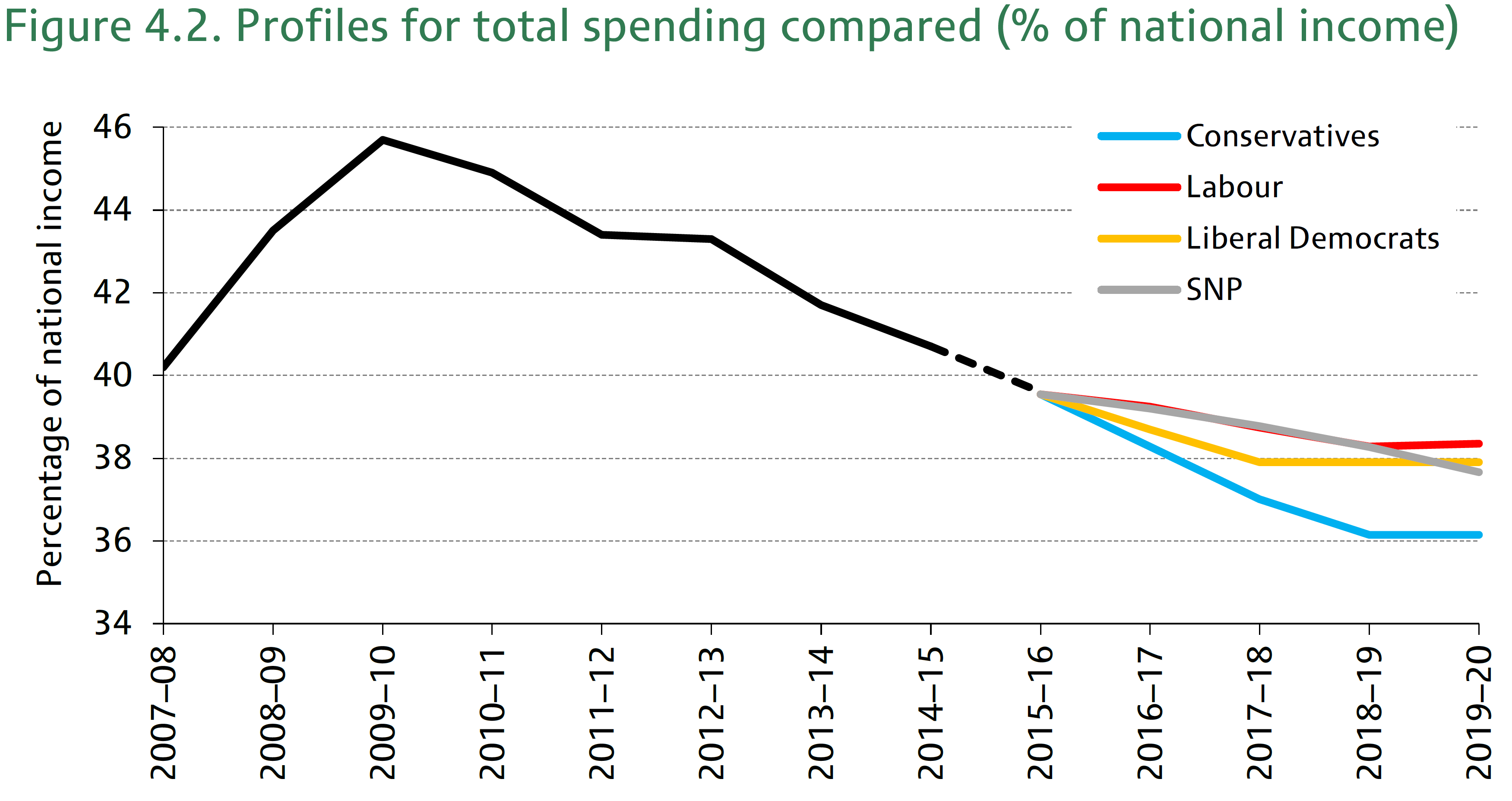
According to Carl Emmerson, IFS deputy director:
“There are genuinely big differences between the main parties’ fiscal plans. The electorate has a real choice, although it can at best see only the broad outlines of that choice. Conservative plans involve a significantly larger reduction in borrowing and debt than Labour plans. But they are predicated on substantial and almost entirely unspecified spending cuts and tax increases. While Labour has been considerably less clear about its overall fiscal ambitions its stated position appears to be consistent with little in the way of further spending cuts after this year”.
So what would be the implications of the plans of the various parties for fiscal policy and what, in turn, would be the implications for economic growth and investment? The various videos and articles look at the briefing note and at what is missing from the parties’ plans.
Videos
 Voters ‘in the dark’ over budgets BBC News, Robert Peston (23/4/15)
Voters ‘in the dark’ over budgets BBC News, Robert Peston (23/4/15)
 Election 2015: Main parties respond to IFS deficit claims BBC News, James Landale (23/4/15)
Election 2015: Main parties respond to IFS deficit claims BBC News, James Landale (23/4/15)
 Election 2015: ‘Not enough detail’ on deficit cut plans, says IFS BBC News, Paul Johnson (23/4/15)
Election 2015: ‘Not enough detail’ on deficit cut plans, says IFS BBC News, Paul Johnson (23/4/15)
 IFS: Electorate ‘left in the dark’ by political parties ITV News, Chris Ship (23/4/15)
IFS: Electorate ‘left in the dark’ by political parties ITV News, Chris Ship (23/4/15)
 Voters Left In Dark Over Spending Cuts, Says IFS Sky News (23/4/15)
Voters Left In Dark Over Spending Cuts, Says IFS Sky News (23/4/15)
 Post-election austerity: parties’ plans compared Institute for Fiscal Studies, Press Briefing (23/5/15)
Post-election austerity: parties’ plans compared Institute for Fiscal Studies, Press Briefing (23/5/15)
Articles
IFS: election choice is stark Economia, Oliver Griffin (23/4/15)
Election 2015: Voters ‘left in the dark’, says IFS BBC News (23/4/15)
The huge choice for voters BBC News, Robert Peston (23/4/15)
IFS manifesto analysis: fantasy island of Tory deficit reduction plan The Guardian, Larry Elliott (23/4/15)
Tories have £30bn black hole in spending plans, says IFS The Guardian, Heather Stewart (23/4/15)
Ed Miliband will leave Britain an extra £90bn in debt, IFS finds The Telegraph, Steven Swinford (23/4/15)
IFS despairs as it finds no party’s imaginary numbers add up The Guardian, John Crace (23/4/15)
Reality Check: Why should we trust the IFS? BBC News, Sebastian Chrispin (23/4/15)
IFS: Households can expect lower incomes, whoever wins the election BBC News, Brian Milligan (28/4/15)
Briefing Notes
Post-election Austerity: Parties’ Plans Compared Institute for Fiscal Studies, Briefing Note BN170, Rowena Crawford, Carl Emmerson, Soumaya Keynes and Gemma Tetlow (April 15)
Taxes and Benefits: The Parties’ Plans Institute for Fiscal Studies, Briefing Notw BN 172, Stuart Adam, James Browne, Carl Emmerson, Andrew Hood, Paul Johnson, Robert Joyce, Helen Miller, David Phillips, Thomas Pope and Barra Roantree (April 2015)
Questions
- What detail is missing about cuts in the Conservative plans?
- What detail is missing in the Labour plans on borrowing requirements?
- How do (a) the Liberal Democrat plans and (b) the SNP plans differ from Conservative and Labour plans?
- Find out the public finances plans of (a) the Green Party; (b) UKIP; and (c) Plaid Cymru. How different are these plans from those of other parties?
- Define ‘austerity’.
- How would a tightening of fiscal policy affect economic growth (a) in the short term; (b) in the long term?
- How would an expansion of the economy affect the budget balance through automatic fiscal stabilisers?
- What is meant by the structural deficit? How could this be reduced?
- Would the structural deficit be affected by austerity policies and the resulting size of the output gap, or is it independent of such policies? Explain.
 Since coming to office two years ago, Shinzo Abe’s government has been determined to revive the Japanese economy. The policy has involved ‘three arrows‘: expansionary fiscal policy, expansionary monetary policy and supply-side reforms. But figures just out show that the Japanese economy is back in recession. The economy shrank by 0.4% in quarter 3, having shrunk by 1.9% in quarter 2.
Since coming to office two years ago, Shinzo Abe’s government has been determined to revive the Japanese economy. The policy has involved ‘three arrows‘: expansionary fiscal policy, expansionary monetary policy and supply-side reforms. But figures just out show that the Japanese economy is back in recession. The economy shrank by 0.4% in quarter 3, having shrunk by 1.9% in quarter 2.
This has come as a huge disappointment for Mr Abe, who has staked his political reputation on escaping from deflation and achieving sustained economic growth. In response, he has called a general election to put a revised economic plan to the electorate.

The main cause of the reversal into recession has been an increase in the sales tax on all goods, which has dampened spending. The tax rise, planned by the previous government, was to help reduce the deficit and start tackling the huge public-sector debt, which, at over 230% of GDP, is by far the highest in the developed world. Another rise in sales tax is due in October 2015 – from 8% to 10%. Mr Abe hopes to cancel the rise and it is this that he may put to the electorate.
So what is the outlook for Japan? Will quarter 4 show economic growth, or will pessimism have set in? Will the Bank of Japan introduce even more quantitative easing, or will it wait for the latest increase in QE to take effect (see the blog post, All eased out: at least for the USA and UK)?
The following articles look at the implications of the latest news, both for Japan and globally, and at the options for the government and central bank.
Articles
Japanese economy falls into surprise recession Independent, Maria Tadeo (17/11/14)
Japan’s economy makes surprise fall into recession BBC News (17/11/14)
Coming to a crunch: Time is running out for Abenomics The Economist (20/11/14)
Japan’s economy: Delay the second consumption tax hike The Economist (17/11/14)
Defying Expectations, Japan’s Economy Falls Into Recession New York Times, Jonathan Soble (16/11/14)
Japan shocks as economy slips into recession CNBC, Li Anne Wong (17/11/14)
Japan Unexpectedly Enters Recession as Abe Weighs Tax: Economy Bloomberg, Keiko Ujikane and Toru Fujioka (17/11/14)
The world should be wary: Japan’s economic woes are contagious The Guardian, Larry Elliott (17/11/14)
Why is Japan heading to the polls? BBC News (18/11/14)
Previous news items on this site
A new economic road for Japan? (January 2013)
A J-curve for Japan? (May 2013)
Japan’s three arrows (June 2013)
Abenomics – one year on (December 2013)
Japan’s recovery (January 2014)
Japan’s CPI: An Update (May 2014)
All eased out: at least for the USA and UK (November 2014)
Data
Quarterly Estimates of GDP Japanese Cabinet Office
Japan and the IMF IMF Country Reports
Economic Outlook Annex Tables OECD
Questions
- Give details of the Japanese government’s three arrows.
- Discuss the pros and cons of the rise in the sales tax. Is it possible for the rise in the sales tax to increase the size of the public-sector deficit?
- What have been the effects of Japanese government policies on (a) prices of goods and services; (b) living standards; (c) asset prices?
- Who have been the gainers and losers of the policies?
- How is the Japanese situation likely to effect the value of the yen? How is this, in turn, likely to affect its trading partners? Could this set off a chain reaction?
 As the Chancellor of the Exchequer, Philip Hammond, delivers his first Autumn statement, both the Office for Budget Responsibility (OBR) and the National Institute for Economic and Social Research (NIESR) have published updated forecasts for government borrowing and government debt.
As the Chancellor of the Exchequer, Philip Hammond, delivers his first Autumn statement, both the Office for Budget Responsibility (OBR) and the National Institute for Economic and Social Research (NIESR) have published updated forecasts for government borrowing and government debt. One reason is looser monetary policy. Following the Brexit vote, the Bank of England cut Bank Rate from 0.5% to 0.25% and introduced further quantitative easing. This makes it cheaper to finance government borrowing. What is more, the additional holdings of bonds by the Bank mean that the Bank returns to the government much of the interest (coupon payments) that would otherwise have been paid to the private sector.
One reason is looser monetary policy. Following the Brexit vote, the Bank of England cut Bank Rate from 0.5% to 0.25% and introduced further quantitative easing. This makes it cheaper to finance government borrowing. What is more, the additional holdings of bonds by the Bank mean that the Bank returns to the government much of the interest (coupon payments) that would otherwise have been paid to the private sector.









